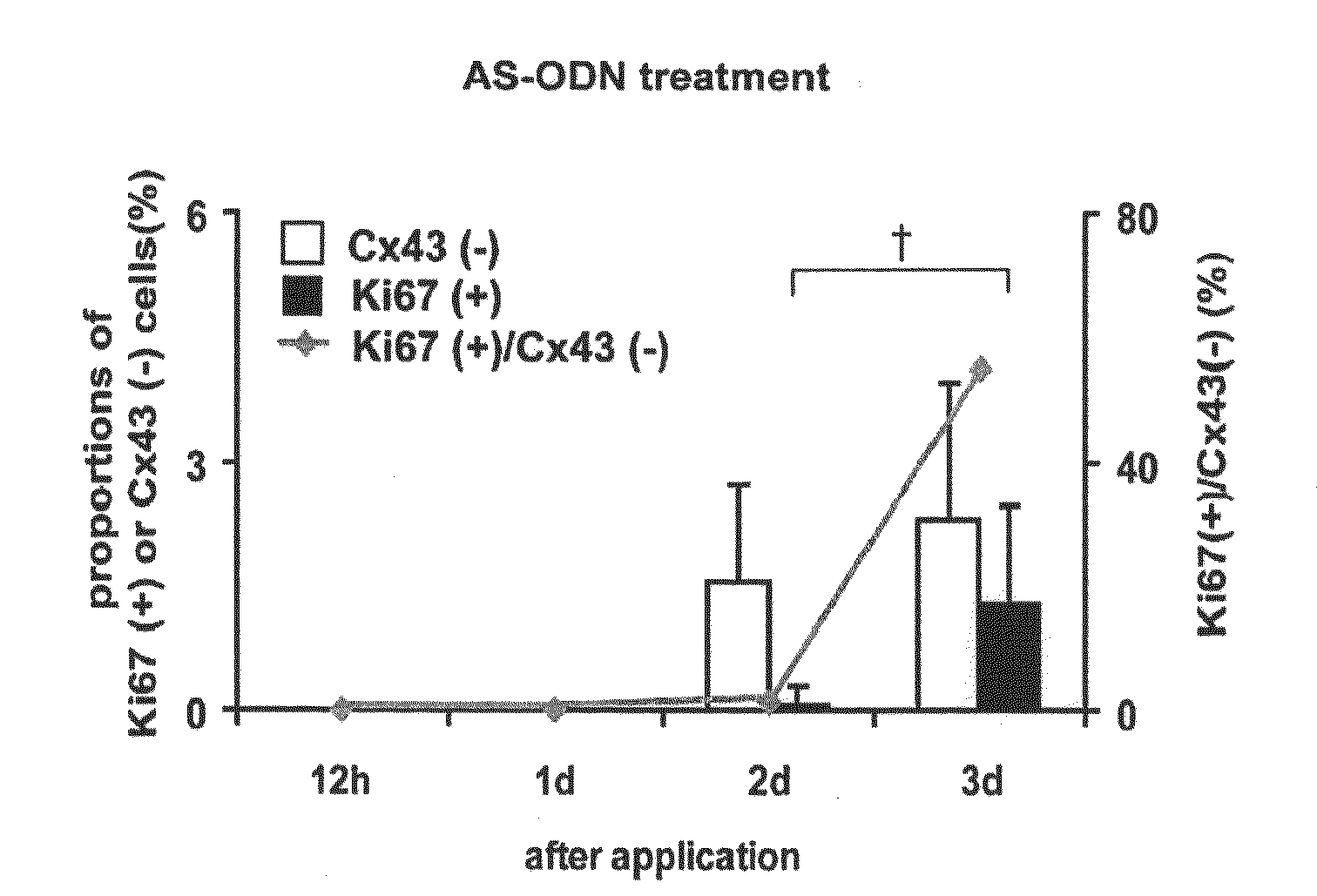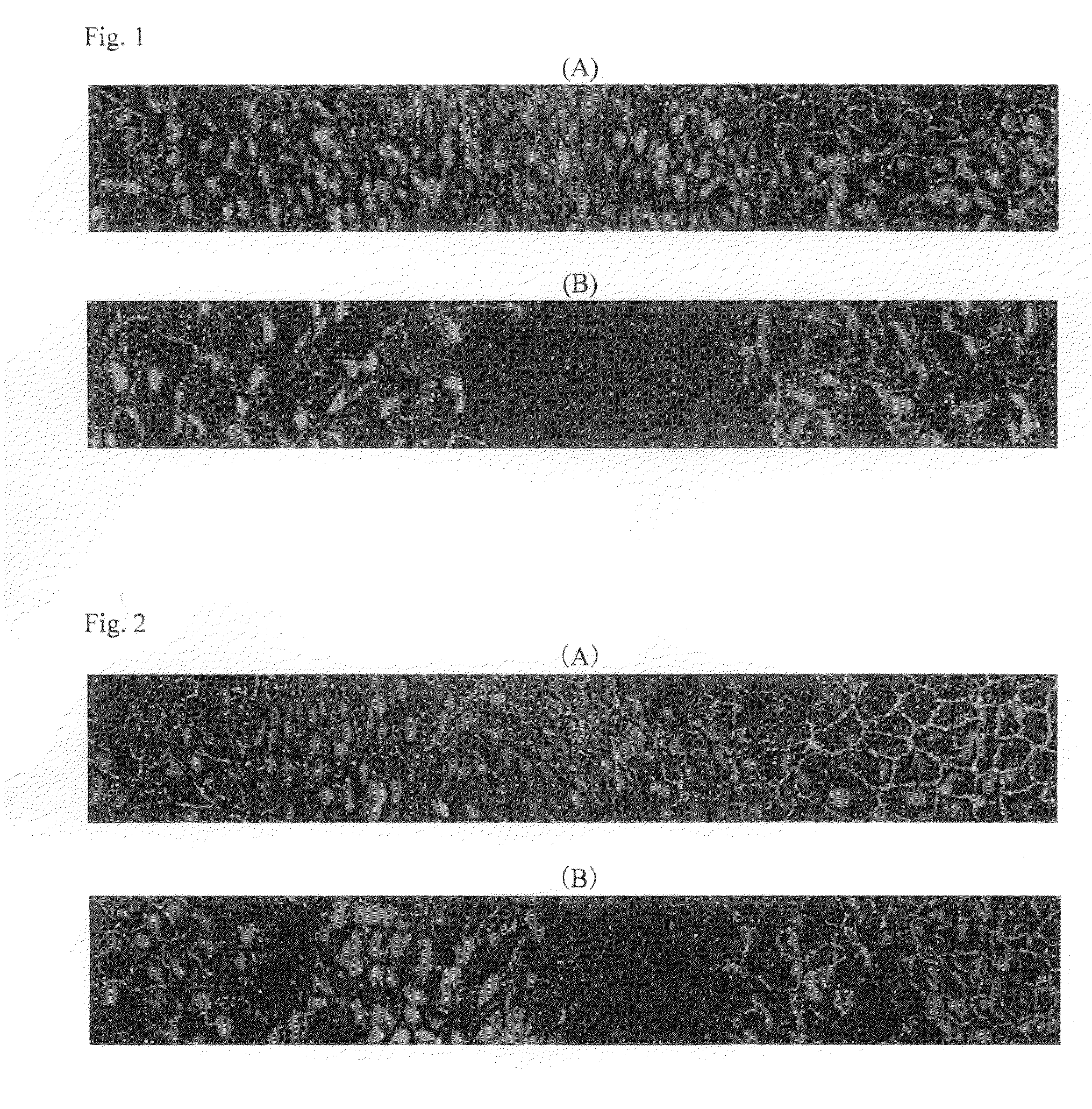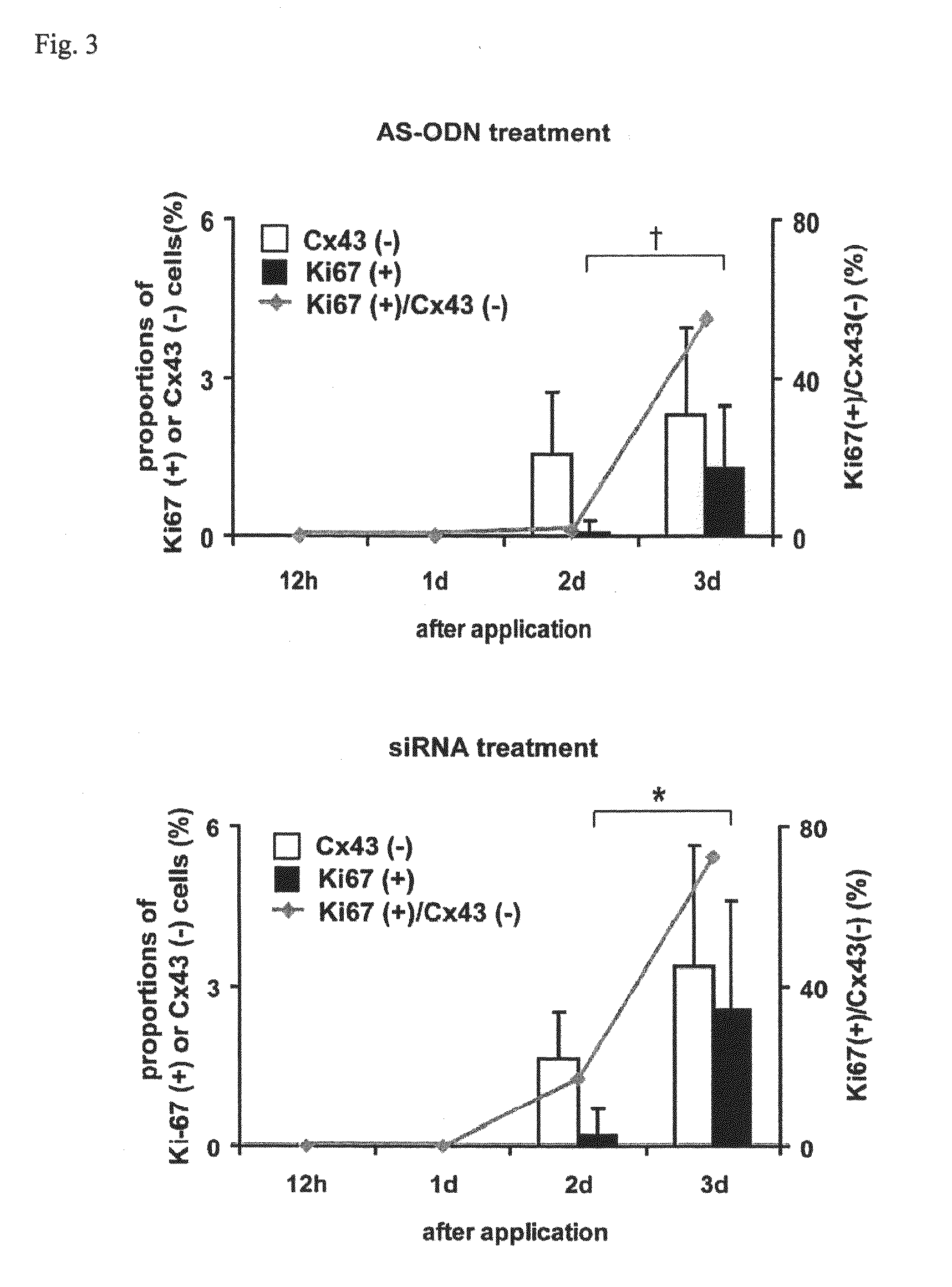Therapeutic Agent for Corneal Diseases
a technology of endothelial cells and therapeutic agents, which is applied in the direction of drug compositions, organic chemistry, genetic material ingredients, etc., can solve the problems of bullous keratopathy and the inability to maintain the transparency of the cornea, and achieve the effects of maintaining transparency, constant water content, and little ability to prolifera
- Summary
- Abstract
- Description
- Claims
- Application Information
AI Technical Summary
Benefits of technology
Problems solved by technology
Method used
Image
Examples
example 1
Subjects and Methods
1) Production of Corneal Wound-Healing Model Using Rats
[0070]Wistar strain rats (male, 8 weeks of age) were used. After each rat was deeply anesthetized with pentobarbital, a needle of 30G (Nipro Medical Industries Co., Ltd.) was inserted from a limbus into an anterior chamber to take up 20 μL of anterior chamber fluid. The corneal endothelium was mildly scratched with the needle from the side of the anterior chamber to make a wound. Subsequently, in order to examine the effects of antisense oligonucleotides and RNAi for connexin 43 (Cx43) on corneal wound healing, 20 μL of 40 μM AS ODN or siRNA was injected into the anterior chamber using another needle inserted through the same incision (when the total amount of liquid in the anterior chamber is supposed to be 40 μL, the final concentration of AS ODN and siRNA in the liquid in the anterior chamber was 20 μM). After one or three days, the eye ball was removed and corneoscleral sections (diameter of 6 to 7 mm) we...
example 2
Effect of hCx43-siRNA on Regeneration of Monkey Corneal Endothelium
[0084]The effect of hCx43-siRNA on the proliferation of endothelial cells was observed by administering the following hCx43-siRNA to a cultured endothelial cell sheet obtained from the cornea of a crab-eating macaque and counting the number of cells in a DNA synthesis phase.
hCx43-siRNASense:5′-CAA UUC UUC UUG CCG CAA TT-3′(SEQ ID NO: 7)Antisense:5′-UUG CGG CAA GAA GAA UUG TT-3′(SEQ ID NO: 8)
[0085]As a result, the number of BrdU-positive cells was clearly increased in the hCx43-siRNA administration groups (#2-4) compared with the hCx43-siRNA non-administration group (#1), demonstrating that hCx43-siRNA (Cx43-siRNA of human and monkey have the same sequence) promotes the regeneration of monkey corneal endothelial cells.
TABLE 2AdministrationBrdU-positiveof hCx43-siRNAcells#1−19#2+29#3+40#4+30
[0086]From the results of Examples 1 and 2, it has been elucidated that the nucleic acid molecule (antisense oligonucleotides, siR...
example 3
In Vivo Effects of hCx43-siRNA on Regeneration of Monkey Corneal Endothelium
[0087]Using a corneal endothelium disorder model from crab-eating macaques, the corneal endothelial cells of which have a poor proliferative ability in vivo similar to human beings, it is possible to evaluate the effect of administering siRNA that selectively inhibits the expression of human connexin 43 into the anterior chamber on corneal endothelium wound healing.
1. Preparation of a Connexin 43-inhibiting Drug
[0088]The following siRNA (hCx43-siRNA) was used.
Sense:5′-CAA UUC UUC UUG CCG CAA TT-3′Antisense:5′-UUG CGG CAA GAA GAA UUG TT-3′
2. Preparation of Corneal Endothelium Disorder Models from Crab-Eating Macaques and Administration of Connexin 43-Inhibiting Drugs
1) General anesthesia: General anesthesia by intramuscular injection of ketamine hydrochloride and xylazine hydrochloride was given, and then the animal was carried from a cage to a medical table. On the medical table, inhalation anesthesia using ...
PUM
| Property | Measurement | Unit |
|---|---|---|
| diameter | aaaaa | aaaaa |
| temperature | aaaaa | aaaaa |
| temperature | aaaaa | aaaaa |
Abstract
Description
Claims
Application Information
 Login to View More
Login to View More - R&D
- Intellectual Property
- Life Sciences
- Materials
- Tech Scout
- Unparalleled Data Quality
- Higher Quality Content
- 60% Fewer Hallucinations
Browse by: Latest US Patents, China's latest patents, Technical Efficacy Thesaurus, Application Domain, Technology Topic, Popular Technical Reports.
© 2025 PatSnap. All rights reserved.Legal|Privacy policy|Modern Slavery Act Transparency Statement|Sitemap|About US| Contact US: help@patsnap.com



